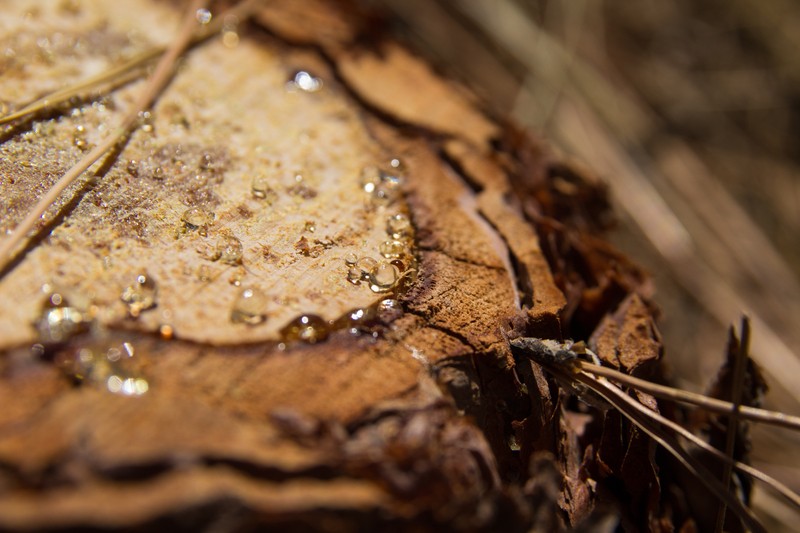

Tin of pine salve on the resin-covered tree it’s made from. Tip: If your original infusing jar still has a bunch of resin stuck to the bottom and you can’t clean it out, add more plain oil, cap the jar, and tuck it away in a warm place – like the top of your fridge, or a warm room – to infuse the slower way for a month or two. Just carefully pour out your oil when using for recipes, leaving the sediment behind in the jar.

Don’t heat resin in a pan over direct heat, always use the indirect heat of a double burner. Pure pine resin is flammable, so keep it away from an open flame. (Which equates to about 1 1/2 to 1 3/4 cups of oil.)

If you don’t have a lot of resin to work with, you can use a higher ratio instead – such as 1 part resin to 8 parts oil.So if you collect 1/4 cup of resin, then use about 3/4 cup to 1 cup of oil. For most skincare applications, you can use roughly 3 to 4 times as much oil as crushed resin.How much resin and oil you use, will depend on how much resin you’ve collected, and how strong you want your oil to be. a little extra oil to use when cleaning up (coconut oil works really well for this).a stainless steel or heatproof strainer.small saucepan with several inches of water, to create a double boiler effect.a glass canning or mason jar, to use for infusing.oil of your choice (see more on that below).pine resin that has been crushed or powdered (see above for how).Pine resin infused oil can be used to make natural products such as salve, body butter, lotion, and soap! To make the oil, you’ll need: Both have a wonderful woodsy resinous scent! Infused Oil The jar on the right is made with 1 part Virginia pine resin and 8 parts of oil. Two jars of freshly infused oil: The one on the left is made with ponderosa pine resin and a ratio of 1 part resin to 3 parts oil.
#Timberborn pine resin download#
You can also check your local or state resources – they have tons of helpful information available! We found the Virginia Department of Forestry’s Common Native Trees of Virginia Guide (which you can freely download on their site) really helpful when starting to learn our trees. It should help you get started recognizing the types of pine that grow around you. The Arbor Day Foundation has an awesome interactive “What Tree Is This?” feature on their site. Please read Green Deane’s article on Yew, over at Eat the Weeds to learn more about its toxicity. One evergreen you don’t want to accidentally confuse with pine is Yew ( Taxus spp). The resin from spruce or some firs is also useful. Other pines to collect resin from include pinyon ( Pinus edulis) and Ponderosa ( Pinus ponderosa). Around our area, we mainly have eastern white pine ( Pinus strobis), Virginia pine ( Pinus virginiana), and loblolly pine ( Pinus taeda), so that’s what we use. You can forage resin from all types of pines. *For reference, Hard Mode has 15-30 day droughts.Clumps of resin on a fallen Virginia pine (Pinus virginiana) tree. Timberborn Season 2 Episode 27: Finalizing our new potato chestnut farm summer camp rest stop area.ĭrought Duration Handicap: 10% for 30 cycles


 0 kommentar(er)
0 kommentar(er)
